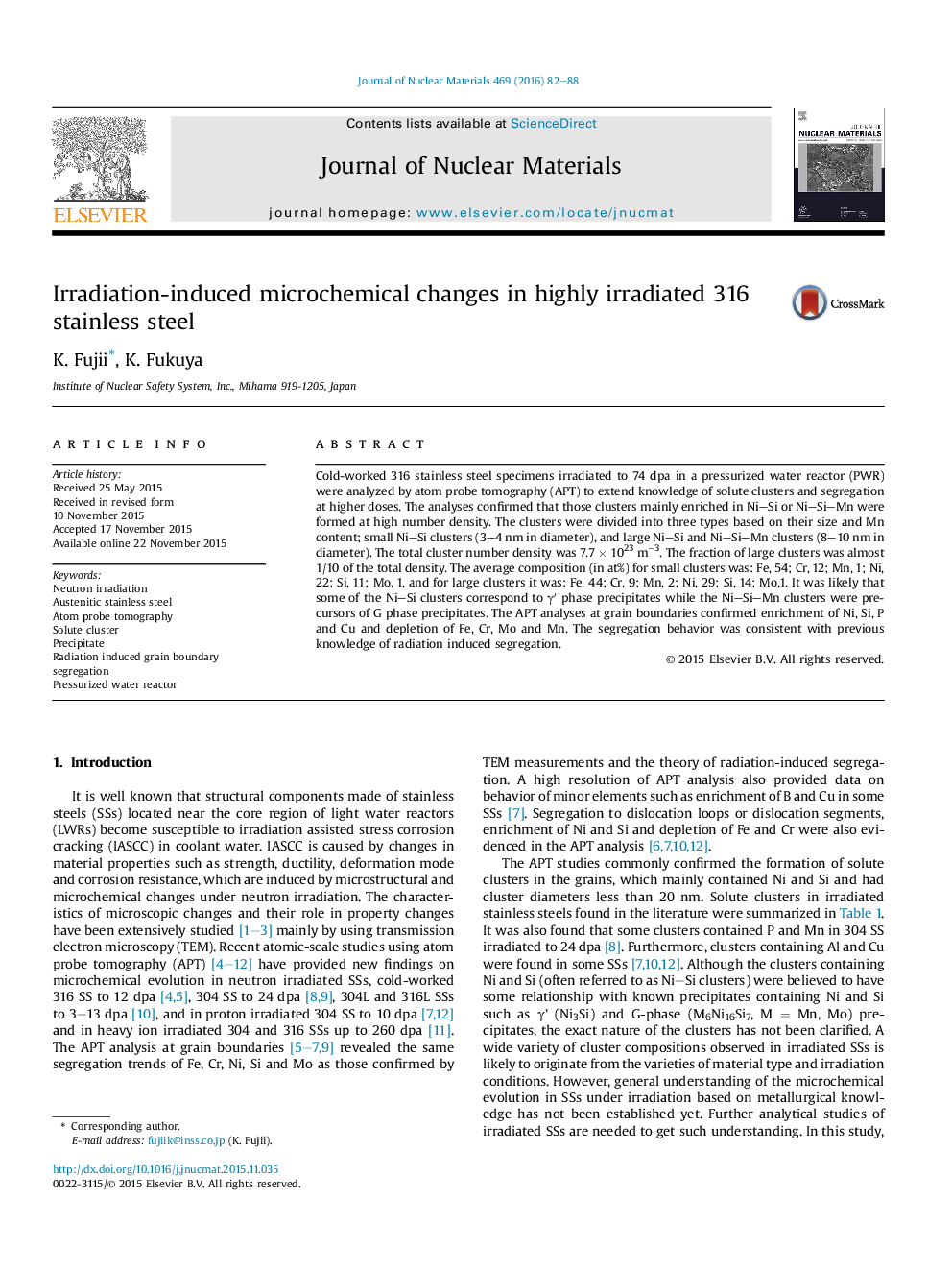| Article ID | Journal | Published Year | Pages | File Type |
|---|---|---|---|---|
| 1564780 | Journal of Nuclear Materials | 2016 | 7 Pages |
Abstract
Cold-worked 316 stainless steel specimens irradiated to 74 dpa in a pressurized water reactor (PWR) were analyzed by atom probe tomography (APT) to extend knowledge of solute clusters and segregation at higher doses. The analyses confirmed that those clusters mainly enriched in Ni-Si or Ni-Si-Mn were formed at high number density. The clusters were divided into three types based on their size and Mn content; small Ni-Si clusters (3-4 nm in diameter), and large Ni-Si and Ni-Si-Mn clusters (8-10 nm in diameter). The total cluster number density was 7.7 Ã 1023 mâ3. The fraction of large clusters was almost 1/10 of the total density. The average composition (in at%) for small clusters was: Fe, 54; Cr, 12; Mn, 1; Ni, 22; Si, 11; Mo, 1, and for large clusters it was: Fe, 44; Cr, 9; Mn, 2; Ni, 29; Si, 14; Mo,1. It was likely that some of the Ni-Si clusters correspond to γⲠphase precipitates while the Ni-Si-Mn clusters were precursors of G phase precipitates. The APT analyses at grain boundaries confirmed enrichment of Ni, Si, P and Cu and depletion of Fe, Cr, Mo and Mn. The segregation behavior was consistent with previous knowledge of radiation induced segregation.
Keywords
Related Topics
Physical Sciences and Engineering
Energy
Nuclear Energy and Engineering
Authors
K. Fujii, K. Fukuya,
